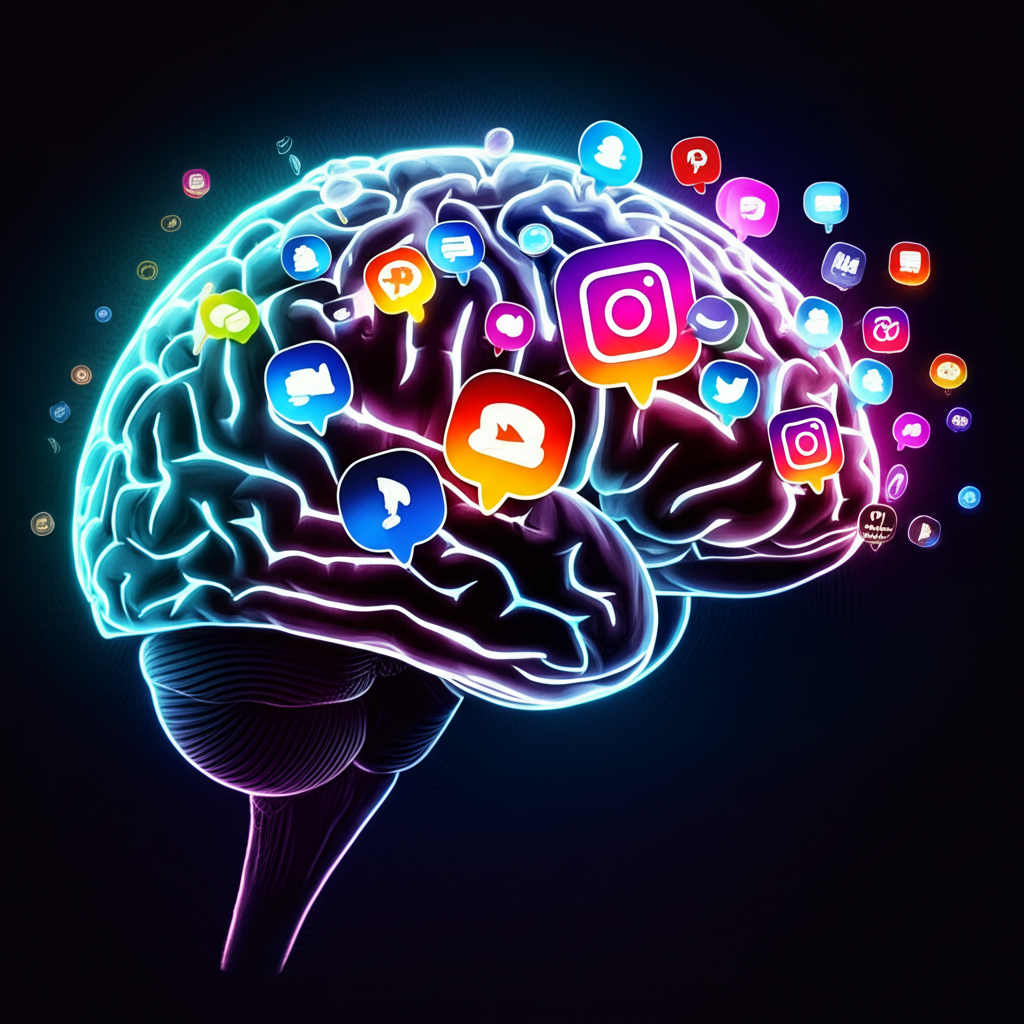Social media platforms are everywhere. These tools fill our phones, our conversations, and often, our free time. Instagram, for example, became a cornerstone of daily American life. It shaped how we share moments and connect. However, a surprising counter-trend is emerging. Increasingly, people choose to delete these apps, making space for a different kind of life.

This choice goes beyond a simple break from social media. It reflects a growing philosophy: digital minimalism. This idea means using technology with purpose. We avoid letting it simply consume us. Instead, we become deliberate with our digital tools. We use them for specific, high-value tasks, not passive scrolling. Importantly, a surprising number of Americans, in 2025, are making this conscious decision to delete Instagram. They want to reclaim their time, attention, and mental well-being. This post explores why this shift is happening. Furthermore, it will look at the core ideas behind digital minimalism. We will also discuss the real benefits people find. Finally, we will consider what this trend suggests for the future.
The Social Media Saturation Point: Why the Shift?
Beyond FOMO: The New Fear is “JOMO” (Joy of Missing Out)
Do you remember the “fear of missing out,” or FOMO? It once drove our constant online presence. We felt we needed to see every post, every story. Now, however, that feeling is changing for many. A new sentiment, the “Joy of Missing Out” (JOMO), is taking hold. People are finding freedom in disconnecting. Moreover, they embrace the peace that comes from not knowing every online update.
Social media began with excitement and positive connections. However, for a growing number of users, those initial feelings faded. Many now experience fatigue, a sense of obligation, and even disillusionment. The novelty wore off. This shift highlights a deeper dissatisfaction with constant online demands.
The Hidden Costs of Constant Connection
Constant connection comes with real, often unseen, costs. These impacts touch various parts of our lives. Specifically, they affect our minds, our time, and even our ability to focus.
- Mental Health Impact: Extensive Instagram use links clearly to mental health challenges. For instance, research suggests connections to increased anxiety, depression, and body image issues. Studies by the American Psychological Association https://www.apa.org/ highlight these links. Users often compare their lives to curated, perfect images. This comparison frequently leads to feelings of inadequacy.
- Time Drain: The average American spends a surprising amount of time on social media. This time quickly adds up. Think about what else you could do. This daily commitment takes away from other activities. It reduces time for hobbies, learning, or simply relaxing.
- Attention Economy: Instagram is a master of the attention economy. Its design aims to capture and keep your focus. Algorithms, notifications, and the endless scroll feature all work together. This design can reduce our ability to concentrate. It also makes deep, focused work harder to achieve.
- Algorithm Fatigue: Many users now feel manipulated by repetitive, algorithm-driven content. The content often prioritizes engagement metrics. Algorithms often push genuine connection aside. This leads to boredom and a feeling of disconnect, despite being “connected.”

Digital Minimalism Defined: More Than Just Deleting Apps
Core Principles of Cal Newport’s Philosophy
Digital minimalism is a thoughtful approach to technology. It is not about abandoning digital tools entirely. Instead, it encourages a careful, controlled relationship with them. Cal Newport, who coined the term, outlines clear principles for this philosophy.
- Intentionality: Use digital tools for a clear purpose. You should know why you are using an app or visiting a website. This prevents passive consumption. You choose your digital interactions actively.
- Ruthless Optimization: Look at your digital tools closely. Decide which ones truly support your values and goals. Then, cut out or significantly reduce the use of all others. This process is about trimming the fat.
- Contrast with Abstinence: Digital minimalism differs from total abstinence. It does not mean going offline completely. It means being deliberate. You cultivate a mindful relationship with technology. You do not let technology dictate your life.
Why Instagram Is a Key Target
Why Instagram Becomes a Prime Target for Deletion
Instagram often stands out as a prime target for digital minimalists. Its design and common use patterns make it particularly challenging for intentional living.
- Visual-Centric Nature: Instagram focuses on images and videos. This often leads to highly curated, sometimes unrealistic content. People frequently compare themselves to these perfect online presentations. This comparison can easily foster self-doubt and inadequacy.
- Addictive Loops: Specific features on Instagram create strong behavioral loops. Think about Stories, Reels, and the Explore page. Designers create them for endless, mindless scrolling. These features pull users into a cycle of consumption. This makes it hard to stop once you start.
- Passive Consumption: Instagram often promotes passive viewing. Users scroll through feeds, seeing what others post. It encourages less active creation or meaningful, two-way interaction. For many, this leads to a net negative emotional return.
- Specific Features: Other elements add to the mental burden. The pressure of ‘likes,’ constant DM notifications, and the perceived need for constant updates create a feeling of obligation. These features contribute to a sense of never-ending digital demands.
Common Questions About Digital Minimalism
- What is the main goal of digital minimalism? The goal is to use technology less often, but more thoughtfully, aligning with your values.
- Is digital minimalism only for tech-savvy people? No, anyone can practice it. It focuses on mindset, not technical skill.
The Tangible Benefits: Life After Instagram
Many people find significant positive changes after deleting Instagram. They also experience benefits from adopting digital minimalism. These benefits often include more time, better focus, and improved well-being.
Reclaiming Time and Focus
One of the most immediate benefits is reclaiming lost hours. People are now repurposing the time they once spent scrolling. They pursue hobbies, read more books, or engage in deep, focused work. Some learn new skills, like playing an instrument or coding. Others simply enjoy unstructured downtime. This allows for rest and reflection, which modern life often lacks.
Furthermore, many report clearer thinking. They experience reduced mental fog. Their ability to concentrate on complex tasks also improves greatly. This comes from removing constant digital distractions.
Improved Well-being and Connections
Enhanced Mental Well-being
Deleting Instagram often leads to significant improvements in mental health. Users report reduced anxiety and less stress from social comparison. They feel a greater sense of self-acceptance. Many also find more inner peace. The pressure to maintain an online persona simply vanishes.
Sleep quality often improves too. Less blue light exposure before bedtime helps. Also, a reduction in mental stimulation from endless scrolling promotes better rest. Our minds get a chance to unwind naturally.
Strengthening Real-World Connections
Paradoxically, disconnecting online can strengthen real-world bonds. Deleting Instagram often leads to more intentional, higher-quality interactions. People reach out to friends and family in person, or through direct calls and messages. This creates deeper, more meaningful communication.
Moreover, individuals rediscover local communities. They engage in face-to-face activities. This shift moves validation from superficial online metrics to genuine, fulfilling relationships. People start focusing on connections that truly matter.
What 2025 Holds: A Growing Movement?
The decision to leave platforms like Instagram is not just an individual choice. Rather, it points to larger societal shifts. Indeed, we are seeing a cultural re-evaluation of our relationship with technology.
Societal and Cultural Shifts
Societal and Cultural Shifts Fueling the Trend
Public awareness of social media’s downsides is growing rapidly. Documentaries, scientific research, and news reports highlight negative impacts. This information helps people make more informed decisions.
Parents also worry more about children’s screen time. They consider their digital well-being. These concerns influence family-wide tech habits. Many families now set firmer boundaries.
Furthermore, workplaces are valuing focus and deep work more. They encourage minimizing digital distractions. These practices can spill over into personal lives. People see the benefits of less digital noise at work and want it at home too.
Alternative Digital Futures
The Rise of Alternative Platforms and Niche Communities
Not every “deletion” means going completely off-grid. Some people migrate to other digital spaces. These might be more focused or less algorithm-driven platforms. They might also be private digital communities. These alternatives better align with their values. They seek quality interactions over endless content feeds.
Beyond the Hype: Is Digital Minimalism Sustainable?
Digital minimalism faces challenges. Maintaining a minimalist approach to technology requires effort. It is not a one-time fix. However, strategies exist for long-term success. These include regular ‘digital sabbaticals,’ where people completely disconnect for a set period. Also, intentional tech audits help. Users regularly review their app usage. They decide what truly serves them.
Ultimately, digital minimalism is an ongoing practice. It requires constant evaluation and adjustment. It adapts as our needs and technologies change. It’s about a continuous pursuit of balance.
Conclusion
In 2025, a clear trend shows more Americans embracing digital minimalism. People are choosing to delete Instagram. This choice stems from a desire for better mental health, more time, sharper focus, and stronger real-world connections. Ultimately, they are moving away from the constant noise and pressures of endless feeds.
This trend is not a fleeting fad. Rather, it signals a significant and evolving shift. People are changing how they perceive and manage their relationship with technology. They actively seek a different way of living. This movement, therefore, highlights an ongoing pursuit. It centers on digital well-being. Furthermore, it aims at building a more intentional life in our increasingly connected world.
Frequently Asked Questions (FAQs)
1. What is digital minimalism?
Digital minimalism is a philosophy. It focuses on using technology intentionally. You choose to use digital tools that genuinely support your values and goals. You eliminate or reduce the use of all others.
2. Why are people deleting Instagram specifically?
Instagram’s visual-centric nature, addictive features (like Reels and Stories), and emphasis on passive consumption often lead to negative impacts. These include comparison culture, anxiety, and significant time drains for many users.
3. Will deleting Instagram make me feel isolated?
Many people find the opposite. Deleting Instagram often encourages more intentional, higher-quality interactions. It pushes you towards real-world connections and direct communication methods with friends and family.
4. Is digital minimalism about abandoning all technology?</p
No. Digital minimalism is not about going off-grid. It is about a thoughtful, controlled relationship with technology. You decide which tools truly serve you, and you use them with purpose.
5. What are the main benefits of practicing digital minimalism?
Key benefits include reclaiming significant time, improving mental well-being (less anxiety, better sleep), enhancing focus and concentration, and strengthening real-world relationships.
6. How long does it take to see benefits after deleting Instagram?
Some benefits, like reclaiming time, are immediate. Others, such as reduced anxiety or improved focus, might take a few weeks or months to fully realize as you adjust to new habits.
7. Can I still stay connected with friends without Instagram?
Absolutely. Many people rely on direct messaging apps, phone calls, or meeting in person. These methods often lead to deeper, more meaningful connections than superficial likes or comments.
8. Is digital minimalism a permanent decision?
For some, it is. For others, it is an ongoing practice of evaluation. You might reintroduce certain tools with strict boundaries. It’s about continuous adjustment to maintain balance.
9. What if my job requires me to be on social media?
If your job needs social media, you can apply minimalist principles outside of work. Set clear boundaries for personal use. Use social media only during work hours or for specific work-related tasks.
10. What are some first steps to try digital minimalism?
You can start small. Try a “digital detox” for a weekend. Delete just one distracting app. Observe how you feel. Then, slowly expand your efforts. Identify your high-value uses for technology.

